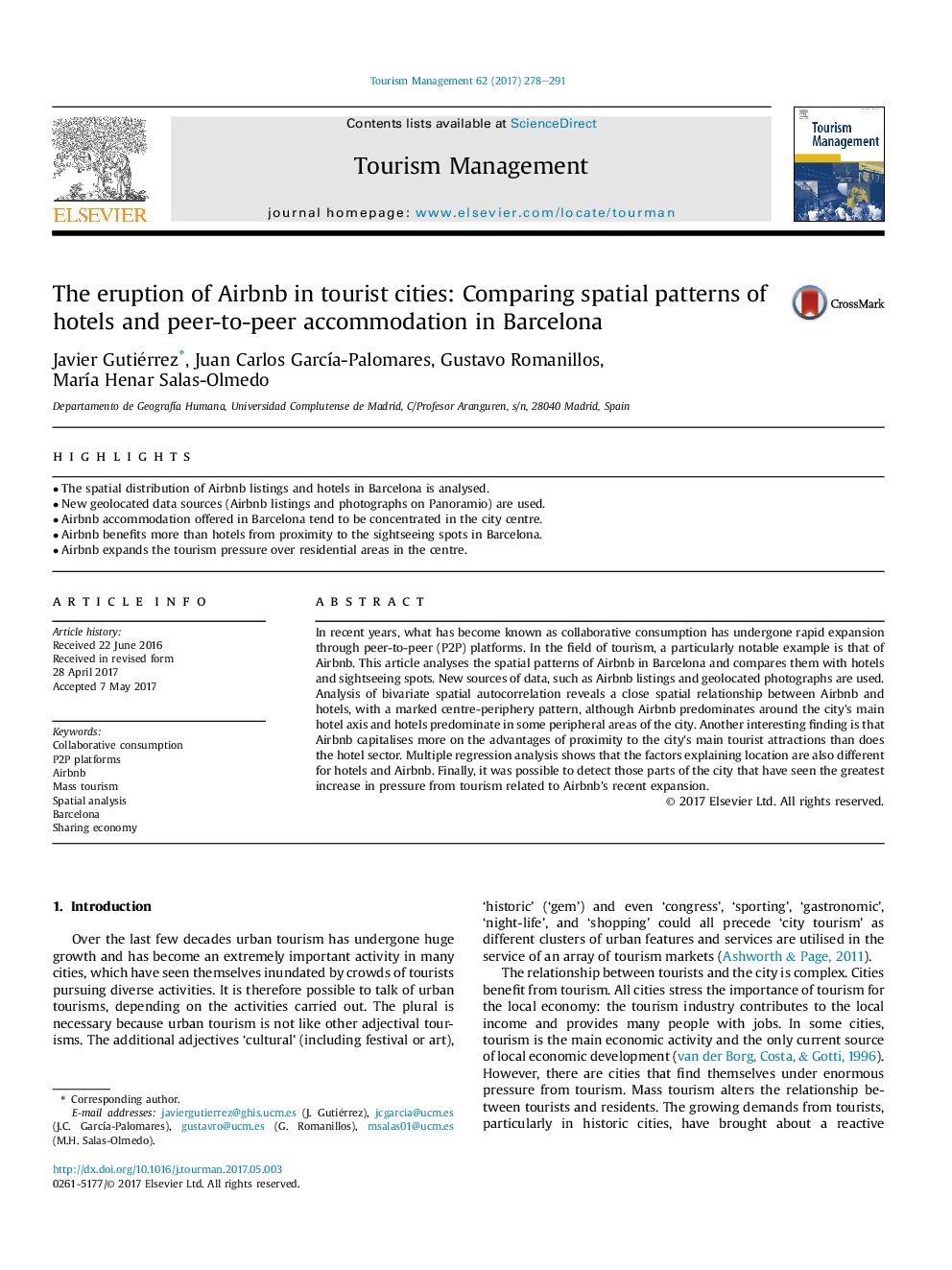| Article ID | Journal | Published Year | Pages | File Type |
|---|---|---|---|---|
| 5108636 | Tourism Management | 2017 | 14 Pages |
Abstract
In recent years, what has become known as collaborative consumption has undergone rapid expansion through peer-to-peer (P2P) platforms. In the field of tourism, a particularly notable example is that of Airbnb. This article analyses the spatial patterns of Airbnb in Barcelona and compares them with hotels and sightseeing spots. New sources of data, such as Airbnb listings and geolocated photographs are used. Analysis of bivariate spatial autocorrelation reveals a close spatial relationship between Airbnb and hotels, with a marked centre-periphery pattern, although Airbnb predominates around the city's main hotel axis and hotels predominate in some peripheral areas of the city. Another interesting finding is that Airbnb capitalises more on the advantages of proximity to the city's main tourist attractions than does the hotel sector. Multiple regression analysis shows that the factors explaining location are also different for hotels and Airbnb. Finally, it was possible to detect those parts of the city that have seen the greatest increase in pressure from tourism related to Airbnb's recent expansion.
Related Topics
Social Sciences and Humanities
Business, Management and Accounting
Strategy and Management
Authors
Javier Gutiérrez, Juan Carlos GarcÃa-Palomares, Gustavo Romanillos, MarÃa Henar Salas-Olmedo,
